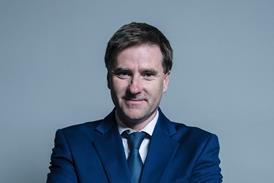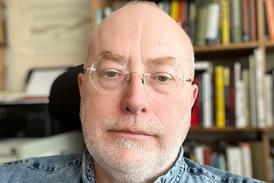Essential insight into England’s biggest health economy, by HSJ bureau chief Ben Clover.
There is a bit of disconnect between different parts of the system on the state of emergency care right now.
Integrated care boards and upwards seem sanguine: Yes, the lack of money means meaningful improvement is going to be difficult, but we’re doing better than other parts of the country and, while last week was difficult, it’s settled down now – goes the thinking.
Hospital people say “super busy”, “very pressured” and “staff can’t see an end in sight”.
London Ambulance Service Trust chief executive Daniel Elkeles told London Eye: “So far 2024-25 is much busier than this time last year and compared to our plan. There were roughly 10,000 more incidents in April 2024 than April 2023. Last weekend we had 6,000 999 calls, three days in a row, which feels like having three consecutive New Year’s Eves.
“There’s a high acuity of patients with increased presentation of respiratory and mental health conditions.”
Even those figures mask how difficult the picture is. Even trusts near the 76 per cent target will still have hundreds of people per day waiting more than four hours, especially frail elderly patients.
The Care Quality Commission was called into St George’s after two people died from falls in accident and emergency in March. Croydon has been double-boarding, ie putting trolleys down both sides of the corridor.
Treating people with mental illness in A&E is not only still a major problem, it “has got far worse”, one senior manager said.
“Despite good people trying hard there seems to be little actual movement/impact for these patients,” said another.
Bed shortfalls are well known and mental health trusts’ attempts to stop referrals to out of area beds have largely foundered. The mental health providers face even knottier problems discharging their patients to suitable housing than the acutes.
But also, “there isn’t a culture of change and transformation” in the MH sector, said one hospital manager.
Another told London Eye: “It feels like there’s a general view shared by all regulators that A&E [and acute wards] can take as much risk as you can cram in. With no real sanction. While other bits of the service don’t share the risk.
“All the boarding happening in acutes — not one MH trust will board patients. So you have acute hospitals with wards taking extra patients and corridors full of extra patients.”
Why isn’t the risk being shared more evenly? “The CQC, safety, the band seven ward manager facing jail.”
North East London Foundation Trust and one of its managers are due to enter pleas to a manslaughter charge next week.
One of the coroners on NELFT’s patch has been damning on the standard of evidence presented by their staff at inquests.
And to be fair, A&E could be the safest place for mental health patients, especially at night, when MH units are very slenderly staffed.
Will there be some kind of new deal for the urgent care system? One hospital leader told HSJ: “It feels like the pressures on the UEC system have become part of life.”
So, when then?
As the dust settles on the decision to move specialist children’s cancer services from St George’s to the Evelina, the issue of actually doing it raises its head.
In papers published this week Royal Marsden chief exec and national cancer boss Dame Cally Palmer said the October 2026 earliest date for the new service was “not deliverable”.
It was Dame Cally’s trust which was party to the arrangement with St George’s which was criticised in an NHS London-commissioned report that ended up buried.
The minutes of the last meeting of South West London ICB said: “Dame Cally noted that it would be important to set a realistic time for the transition.”
So what is a realistic time frame?
The upgrade at the Evelina is a big project and the capital position for Guy’s and St Thomas’ (the host trust) is complicated. In the medium term it also needs to start the transfer of work from the Royal Brompton and Harefield Hospitals from west London. That relies on some land sales, the timing of which is tricky and hugely consequential.
But GSTT has a fairly mighty charity on its side that can likely pay for a fair bit of it. The question of when the work will get transferred is largely for GSTT to answer.
And that’s if the whole thing doesn’t get called in for review by the health and social care secretary.
Victoria Atkins held a meeting on this last night with some of the south west London MPs and some of the NHS England London decision makers.
There is still some manoeuvring about whether a call-in happens or a council launches a judicial review, and London Eye was told the chances were 50:50.
What would the grounds be for calling it in?
Potentially, that having the service up and running by October 2026 was one of the “hurdle criteria” in the decision-making process.
In stating that was not deliverable, arguably, Dame Cally was in effect saying the agreed move does not actually pass this test.
It’s not clear if the St George’s bid would clear that hurdle either but her pronouncement on the Evelina is consequential.
Challenge or no, a prolonged or indeterminate period of uncertainty is not really fair on the staff who are actually delivering the service.
Source
Information obtained by HSJ
Source Date
May 2024
Topics
- Finance
- GUY'S AND ST THOMAS' NHS FOUNDATION TRUST
- London
- London Ambulance Service NHS Trust
- NHS England (Commissioning Board)
- North Central London ICS
- North East London ICS
- North West London ICS
- Quality and performance
- South West London ICS
- St George’s University Hospitals NHS Foundation Trust
- THE ROYAL MARSDEN NHS FOUNDATION TRUST
- Workforce




























No comments yet